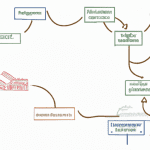Introduction
Cataloging books in a library is a crucial task that ensures efficient organization and easy retrieval of books for library users. By following a systematic approach, librarians can effectively catalog books, making it easier for patrons to find the materials they need. In this article, we will provide a step-by-step guide on how to catalog books in a library.
Step 1: Gather Necessary Information
Before you begin cataloging, gather all the necessary information about the book. This includes the book’s title, author, edition, publication date, ISBN, and any other relevant details. Having this information readily available will streamline the cataloging process.
Step 2: Determine the Cataloging System
Choose a cataloging system that aligns with your library’s needs. The most commonly used system is the Dewey Decimal Classification (DDC) system, which categorizes books into ten main classes. Alternatively, you can opt for the Library of Congress Classification (LCC) system, which is widely used in academic libraries.
Step 3: Assign Call Numbers
Once you have determined the cataloging system, assign a unique call number to each book. The call number acts as the book’s address on the library shelf, making it easier for patrons to locate the book. Follow the guidelines provided by your chosen cataloging system to ensure consistency.
Step 4: Create Cataloging Records
Next, create cataloging records for each book. This involves entering the book’s information into your library’s cataloging software or system. Include the book’s title, author, call number, and any additional information required by your cataloging system. Be thorough and accurate in recording the details to facilitate easy searching and retrieval.
Step 5: Add Subject Headings
To enhance discoverability, add subject headings to your cataloging records. Subject headings are standardized terms that describe the content of the book. Use relevant keywords and phrases that accurately represent the book’s subject matter. This will help users find books on specific topics more easily.
Step 6: Organize the Physical Collection
In addition to cataloging records, it is essential to organize the physical collection. Arrange books on shelves according to their call numbers, ensuring that they are easily accessible to library users. Regularly review and update the organization to accommodate new additions to the collection.
Step 7: Regularly Review and Update Cataloging Records
Cataloging is an ongoing process, and it is crucial to regularly review and update cataloging records. Remove any outdated or damaged books from the collection and update the cataloging system accordingly. This will ensure the accuracy and relevance of your library’s catalog.
Conclusion
Effectively cataloging books in a library is essential for efficient organization and easy access to materials. By following the step-by-step guide outlined in this article, librarians can ensure that their library’s collection is well-organized and easily searchable. Remember to gather all necessary information, determine the cataloging system, assign call numbers, create cataloging records, add subject headings, organize the physical collection, and regularly review and update cataloging records. By doing so, you will provide a valuable service to library users and enhance their overall experience.




